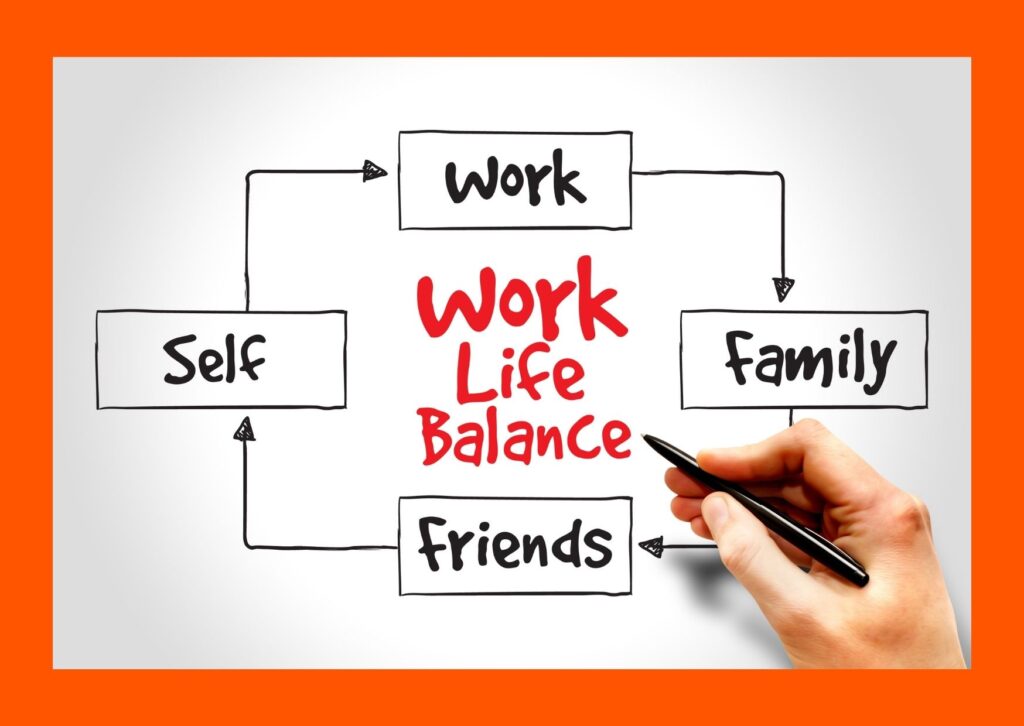Understanding the 10 Common Causes of Workplace Stress
Workplace stress is an inevitable aspect of our working lives.
Understanding the underlying causes of workplace stress can help us manage it better.
Is it the overbearing workload that makes your heart race?
Or the chilly reception from a co-worker that spikes your anxiety?
Maybe it’s the lingering uncertainty about your job’s future that keeps you up at night.
If any of this sounds familiar, you’re not alone. In this blog, we’re pulling back the curtain on the 10 most common causes of workplace stress.
We don’t just spotlight the problems, but we also offer tangible solutions to transform stress into success.
So, whether you’re an employer looking to foster a healthier work environment, or an employee seeking ways to combat stress, this blog can act as your roadmap.
Let’s unravel the puzzle of workplace stress together, making our workplaces not just about work, but about wellbeing too.
10 Common Causes of Workplace Stress
1. Excessive Workload
Cause: Excessive Workload is often the most prevalent cause of workplace stress.
Employees regularly find themselves buried under an avalanche of tasks, swamped by pressing deadlines, and extending their work hours into personal time in an effort to meet expectations.
The incessant pressure to perform, deliver results, and keep up with the pace can be overwhelming.
This situation can trigger feelings of anxiety, contribute to mental exhaustion, and, if not addressed, lead to burnout.
Solution: To combat this, employers should prioritise effectively managing workloads.
They need to ensure tasks are evenly and reasonably distributed among team members.
Regular review and adjustment of tasks and priorities according to employees’ capabilities and current workload are crucial.
For employees, honing time management skills and mastering the art of delegation can make a significant difference.
This way, the burden of excessive work can be alleviated, reducing one of the major causes of workplace stress.

2. Poor Management
Cause: Poor management is another serious contributor to workplace stress.
An environment where communication is inconsistent, favouritism is apparent, recognition is scarce, feedback is inadequate or absent, and support is lacking, can leave employees feeling undervalued, unrecognised, and stressed.
These issues can breed discontent, lower morale, and in the long run, lead to high stress levels, resulting in decreased productivity and high turnover rates.
Solution: Cultivating good leadership is the key to addressing this issue.
Managers need to embody fairness, open communication, supportiveness, and appreciation of employees’ hard work.
Managers can organise activities like wellbeing workshops to help reduce the stress of their team
Additionally, regular feedback sessions can offer employees the chance to voice their concerns and receive constructive criticism.
This helps to foster a sense of belonging and value.
Implementing these practices can help reduce the stress arising from poor management.

3. Job Insecurity
Cause: With the ever-changing economic climate and increasing competition, job insecurity is a persistent source of stress for many employees.
The constant fear of layoffs, the looming threat of job loss, or the perceived lack of career advancement opportunities can lead to prolonged periods of stress, impacting both mental health and job performance.
Solution: Transparency is crucial in combating job insecurity.
Management should communicate openly about the company’s financial health, potential layoffs, and changes in roles or responsibilities.
Additionally, providing and encouraging career development opportunities can alleviate fears about career stagnation.
Ensuring employees feel secure in their positions can help mitigate this prevalent cause of workplace stress.
4. Work-Life Balance
Cause: In today’s world, achieving a healthy work-life balance can be a daunting challenge.
Employees often face long working hours, feel the pressure to bring work home, or are expected to be ‘always available’ due to technological advances.
This can blur the line between work and personal life, leading to stress and a sense of being overwhelmed.
Solution: Employers play a vital role in promoting a balanced work-life culture.
Implementing flexible work hours, discouraging emails or work-related communication outside work hours, and promoting wellness initiatives can help ensure employees have time for personal pursuits.
Setting clear boundaries between work and personal time is crucial for employees.
It allows them to prioritise relaxation, hobbies, and personal relationships, ultimately reducing workplace stress.

5. Poor Working Conditions
Cause: The physical environment in which we work plays a significant role in our overall wellbeing and productivity.
Poor working conditions, such as inadequate lighting, excessive noise, uncomfortable temperatures, or a lack of necessary equipment, can contribute to daily discomfort and frustration, leading to workplace stress.
Additionally, safety concerns or exposure to hazardous substances can compound this stress, leaving employees feeling on edge and anxious.
Solution: Employers should strive to create a safe, comfortable, and healthy working environment.
Regular risk assessments, adherence to safety regulations, and feedback from employees can help identify and address issues.
Consider investing in ergonomic furniture, good lighting, and noise control.
Improving the physical workspace can enhance productivity, morale, and wellbeing, significantly reducing stress.
6. Role Conflict or Ambiguity
Cause: When employees are unclear about their roles, responsibilities, or expectations, or if they’re asked to fulfil conflicting roles, they may experience role conflict or ambiguity.
This lack of clarity can lead to confusion, mistakes, and job dissatisfaction, which in turn can result in stress.
It’s essential for employees to understand what’s expected of them to perform at their best.
Solution: To address this, clear and regular communication about job roles and expectations is key.
Regular meetings and feedback sessions can provide an opportunity to clarify any confusion.
Employers should strive to minimise role conflict by ensuring a well-structured and defined hierarchy and a clear distribution of roles and responsibilities.
This can help alleviate the stress and uncertainty that comes with role ambiguity.

7. Harassment and Bullying
Cause: Unfortunately, harassment and bullying are more common in workplaces than we’d like to admit.
A workplace culture that tolerates bullying, harassment, or discrimination can lead to high stress levels, mental health issues, and a toxic work environment.
These behaviours can severely impact an individual’s self-esteem, sense of safety, and overall job satisfaction.
Solution: Establishing a strong, clear, and enforceable policy against all forms of bullying and harassment is essential.
Employers should cultivate a culture of respect and inclusivity, and offer training to increase awareness about these issues.
Ensuring that there are safe and confidential ways for employees to report incidents is also crucial.
A respectful and inclusive workplace reduces stress and promotes productivity and engagement

8. Lack of Control or Autonomy
Cause: Feeling a lack of control or autonomy over one’s work can be a significant cause of workplace stress.
Employees may feel disempowered or frustrated when they are not given a say in decisions that affect their work.
This sense of helplessness can lead to a feeling of being undervalued, leading to stress and dissatisfaction.
Solution: Empowering employees to have a say in their work processes and decisions can alleviate this stress.
Employers can offer employees autonomy over their schedules, methods, and pace of work where possible.
Additionally, implementing a participative management style can enhance employees’ sense of value and control.
Involving employees in decision-making processes can reduce workplace stress.
9. Difficult Relationships
Cause: Interpersonal conflict with co-workers, supervisors, or clients can cause significant workplace stress.
Dealing with difficult people, toxic behaviour, and unresolved conflict can lead to a hostile work environment, negatively impacting an individual’s mental wellbeing and productivity.
Solution: Building a respectful, collaborative work culture can help prevent interpersonal conflict.
Employers can offer training on conflict resolution, communication skills, and emotional intelligence to equip employees with the tools to navigate difficult relationships.
Establishing channels for open and honest communication can also help resolve conflicts and build healthier relationships, thereby reducing stress.
10. High-Stakes Work
Cause: Certain jobs inherently involve high-stakes situations where mistakes can have serious consequences.
For healthcare workers, first responders, financial professionals, and others in high-pressure fields, the enormous responsibility and constant pressure can lead to significant workplace stress.
Solution: Providing employees in high-stakes roles with adequate support and resources is critical.
This may include comprehensive training, mentorship programs, access to mental health resources, and regular breaks to rest and recharge.
Acknowledging the challenges of these roles and creating a supportive environment can help reduce stress and prevent burnout.

In conclusion, while workplace stress is common, understanding its causes enables us to take action and implement effective solutions.
Recognising these ten common causes of workplace stress can pave the way for healthier, happier, and more productive workplaces.
At Loving Life we deliver wellbeing services to help companies reduce the stress of their employees so they can “Live Life Better”
Author
Tyler Lowe – Health & Wellbeing Speaker
BSc Sport & Exercise Rehabilitation


